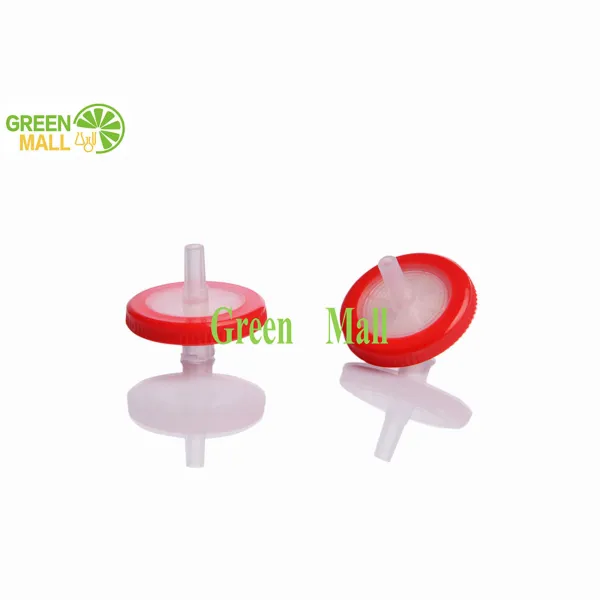Mishandling Syringe Filters: Causes and Solutions
Impact of Excessive Pressure on Membrane Integrity
Too much pressure will break down syringe filter membranes, causing leaks and contaminating samples. Studies show running filters past their pressure limits cuts their lifespan almost in half sometimes. When this happens, the filters stop working properly and might even lose all the precious liquid they're supposed to process. To avoid problems like this, people need proper training about how much pressure is safe and when to check readings. Training sessions should cover what specs mean for different equipment and why pushing too hard actually damages things. Getting this right means longer lasting filters that work better over time, plus samples stay clean and usable for experiments or testing purposes.
Risks of Reusing Single-Use Syringe Filters
Using single use syringe filters multiple times creates major problems, especially cross contamination that messes up lab results completely. Labs report around 30 percent facing data issues because they reuse these filters. Sure, saving money sounds good at first glance, but those pennies saved often lead to much bigger losses when experiments fail or need repeating. Everyone working with these filters needs to understand why following the one time use rule matters so much. Lab managers should put together clear instructions about throwing away used filters right after each run. Sometimes people forget how small actions like this can make such a big difference for accurate testing outcomes across different research settings.
Selecting the Wrong Pore Size for Your Application
Consequences of Incorrect Pore Sizes in HPLC and LC-MS
Picking the wrong pore size when working with syringe filters really messes up how well High-Performance Liquid Chromatography (HPLC) and Liquid Chromatography-Mass Spectrometry (LC-MS) systems perform. When this happens, samples don't separate properly, which throws off the whole analysis process. Research shows that mismatched pore sizes often mean longer retention times and blurry results on chromatograms, making data unreliable at best. Labs need to check those technical specs carefully and talk directly to filter suppliers before finalizing any selections based on what particular experiments require. Taking this extra step upfront saves headaches later on by keeping test results trustworthy and preventing all sorts of workflow delays down the road.
Optimal Pore Size Guidelines for Particle Removal
Getting the right pore size when using syringe filters makes all the difference in how well particles get removed from samples, which affects both clarity and purity. Most labs follow guidelines that suggest matching pore sizes to what kind of contaminants need filtering out. Take bacterial contamination for instance, something around 0.45 microns usually does the trick. When setting up lab procedures, making sure pore size selection becomes part of standard operating protocols helps validate methods properly. Labs that do this tend to see better consistency in their filtering work, improved sample quality overall, and results that actually hold up under scrutiny rather than just looking good on paper.
Using Chemically Incompatible Filter Membranes
Membrane Degradation in Organic vs. Aqueous Solutions
When filter membranes come into contact with the wrong solvents, they start breaking down, which affects how well they work and can ruin the samples being filtered. The problem gets really bad when certain polymer materials meet up with organic solvents. What happens is the membrane swells up and starts absorbing chemicals, making it much less effective at doing its job. Labs have seen this happen time and again, especially during routine testing procedures. That's why proper training matters so much for lab technicians selecting membranes. They need to know what kind of chemicals will be passing through these filters and pick materials that won't react negatively. Different applications require different approaches, and getting this right saves time, money, and prevents wasted samples in the long run.
Testing Chemical Compatibility for Sensitive Samples
Chemical compatibility tests matter a lot when dealing with sensitive or reactive samples because they stop unwanted reactions from messing up the sample or creating false results. Most best practice guides suggest running preliminary checks on membranes through standard compatibility tests before moving to large scale operations. There are plenty of chemical compatibility test kits available now that simplify things for lab technicians. These kits give solid data points which help make better decisions about membrane choice while keeping the sample intact during all stages of filtration. Labs that skip this step often end up wasting time and resources later on.

Overlooking Filter Capacity and Pre-Filtration Needs
Identifying Signs of Premature Filter Clogging
When filters get clogged too soon, it really messes up lab operations and makes test results questionable at best. Labs often notice this happening when their filtration takes way longer than normal for samples to go through. Keep an eye on pressure fluctuations because they tend to show problems before anything gets completely blocked in those syringe filters. Most experienced technicians recommend checking pressures regularly along with doing quick visual inspections of the filters themselves. These simple checks help maintain good workflow without surprises stopping experiments mid-process. A few minutes spent looking at filters now saves hours of frustration later when trying to figure out why something went wrong during testing.
Strategies for High-Volume or Viscous Samples
When dealing with large volumes or thick samples, some careful thinking goes a long way toward getting the most out of filters both in terms of how long they last and how well they work. Getting rid of big particles first through pre-filtration makes all the difference because it stops those pesky chunks from clogging things up so fast. Putting in some coarse filters right before the syringe ones actually takes pressure off the delicate filters downstream and keeps them from getting blocked. Labs working regularly with sticky samples would do well to set up proper protocols for handling these tricky materials. A good SOP means everyone follows the same process, which cuts down on errors and wasted time. The payoff is worth it too – filters last longer when properly maintained, and that translates into better data quality across the board.
Adsorption Issues and Sample Retention Risks
Protein Loss Mechanisms in Low-Binding Filters
Low binding filters aim to keep proteins from sticking, but even small mistakes during handling can cause big problems with sample retention. Studies show that when labs pick the wrong type of low binding membrane, they might lose over 20% of their precious protein samples. Labs working on highly sensitive experiments really need to worry about this kind of thing. Getting good results means looking at both how samples get loaded onto these filters and what happens afterward. Some places have found that simple things like checking filter condition regularly and making sure everything stays calibrated helps cut down those annoying protein losses. When filters work properly, test outcomes stay trustworthy and meaningful for researchers trying to draw conclusions from their data.
Material Selection to Minimize Analyte Retention
Selecting appropriate materials for syringe filters plays a key role in reducing analyte retention and getting good recovery rates from samples. Materials such as fluoropolymer or polyethylene stand out because they work well with many different types of analytes and tend to minimize those pesky binding problems that can throw off results. What makes these options attractive is their strong resistance to chemicals combined with their ability to filter effectively without compromising sample integrity. Most labs would benefit from regularly reviewing what materials they're using based on the actual compounds being tested in their workflows. Taking this approach helps ensure the best possible membrane choices end up in the lab, which ultimately supports successful analysis through better recovery numbers and fewer issues with substances sticking to filter surfaces instead of passing through them.
FAQ Section
What is the main cause of structural integrity loss in syringe filter membranes?
Excessive pressure applied beyond recommended parameters compromises membrane integrity, leading to leaks and sample contamination.
Why is it risky to reuse single-use syringe filters?
Reusing these filters poses cross-contamination risks, affecting analytical results and compromising data integrity.
What are the consequences of using the wrong pore size in syringe filters?
Using incorrect pore sizes can lead to inefficient separation in HPLC and LC-MS, impacting the precision and reliability of analyses.
How can chemically incompatible filter membranes affect sample integrity?
Exposure to incompatible solvents can degrade membranes, reducing filtration efficacy and sample integrity.
How does premature filter clogging disrupt laboratory workflows?
It causes prolonged filtration times and affects result reliability, but monitoring pressure changes can offer early indications of clogging.




